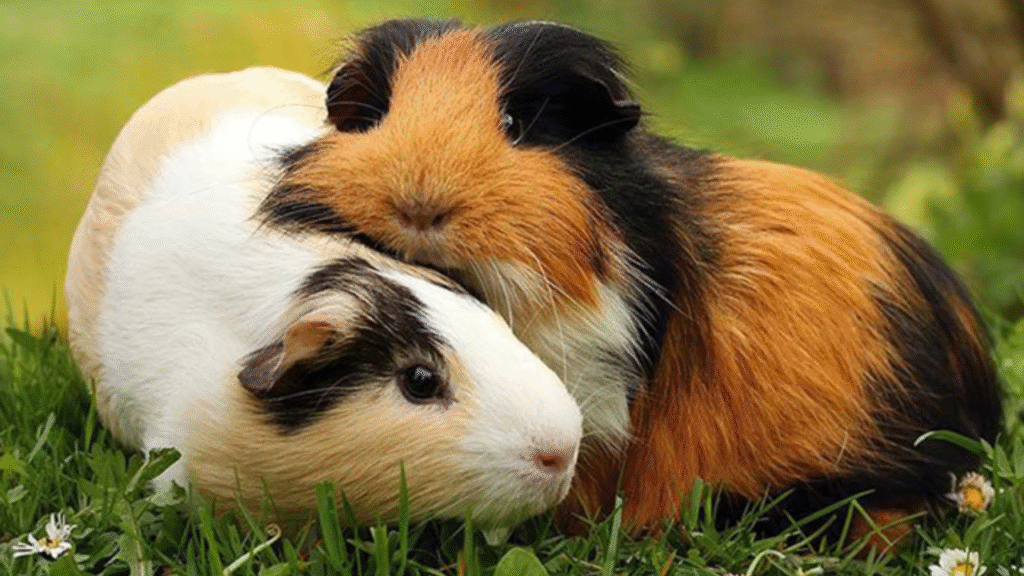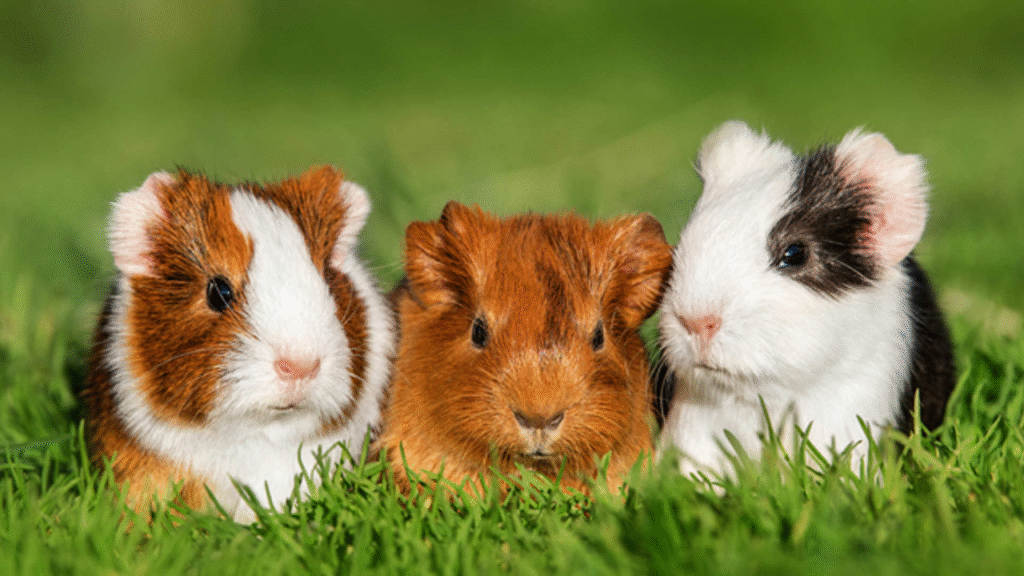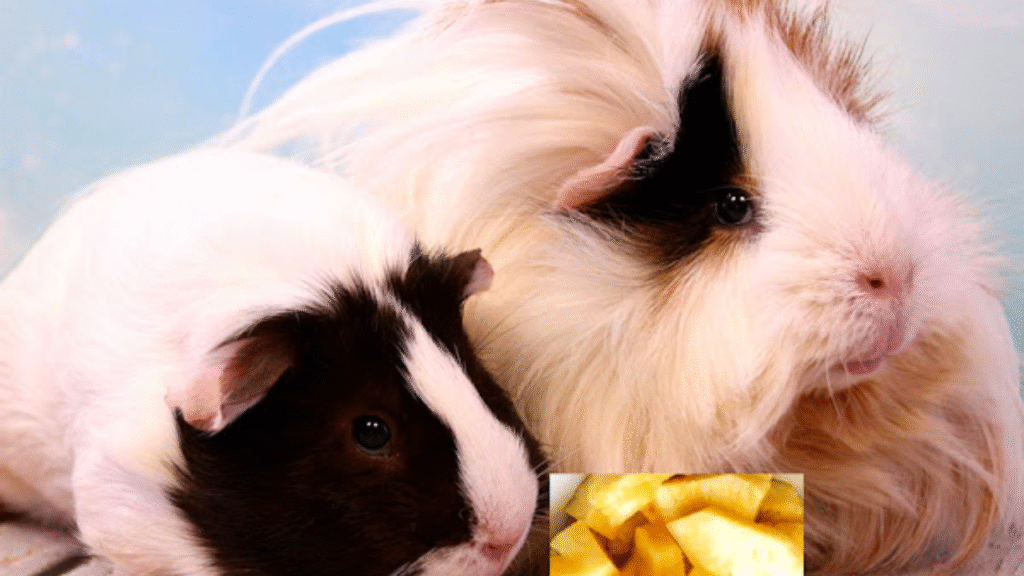Have you ever wondered why guinea pigs are called guinea pigs when they are not from Guinea and definitely not pigs?
These cute little pets have a fascinating story behind their name, origin, and history. Let’s dive deep into the real meaning of “guinea pig”, where they came from, and what makes them so popular today.
What Is a Guinea Pig? (Scientific Name and Basic Facts)
A guinea pig — scientific name Cavia porcellus — is a small rodent species belonging to the Caviidae family.
They are also known as cavies, and despite the misleading name, they are not pigs and not from Guinea.
Quick Guinea Pig Facts
| Feature | Details |
|---|---|
| Scientific Name | Cavia porcellus |
| Animal Type | Rodent |
| Native Region | Andes Mountains, South America |
| Lifespan | 5–8 years |
| Diet | Herbivore – hay, pellets, vegetables |
| Common Breeds | American, Abyssinian, Peruvian |
| Pet Type | Small domesticated pet |
Where Do Guinea Pigs Come From?
One of the most searched questions is “Where do guinea pigs come from?”
The answer: South America — specifically from Peru, Bolivia, and Ecuador.
Ancient Incan civilizations domesticated guinea pigs over 3,000 years ago for food, trade, and rituals. Later, Spanish explorers brought them to Europe in the 1500s, where they became beloved pet animals.
Why Are They Called “Guinea Pigs”? (The Real Origin of the Name)
The origin of the term “guinea pig” is surrounded by mystery, but historians suggest a few strong theories:
| Theory | Explanation |
|---|---|
| 1. The Guinea Trade Route | Early European traders shipped guinea pigs through West Africa (Guinea), leading people to believe they were from there. |
| 2. The British Guinea Coin Theory | Guinea pigs were sold for one guinea coin in 16th-century England, inspiring the name. |
| 3. The Pig-Like Sound and Shape Theory | Their squeaky sounds and plump bodies reminded people of baby pigs. |
Are Guinea Pigs Related to Pigs?
No — guinea pigs are not related to pigs. They belong to the rodent family, closely related to capybaras and chinchillas, not farm pigs.
Here’s a comparison to clear the confusion:
| Feature | Guinea Pig (Cavia porcellus) | Pig (Sus scrofa) |
|---|---|---|
| Animal Type | Rodent | Mammal (Ungulate) |
| Native Region | South America | Worldwide |
| Diet | Herbivore | Omnivore |
| Tail | No tail | Has tail |
| Sound | Squeaks, purrs | Oinks |
What Are Guinea Pigs Called in Other Countries?
In different languages, guinea pigs have names that also include the “pig” reference.
Check out what they’re called worldwide:
| Language | Name | Meaning |
|---|---|---|
| German | Meerschweinchen | “Little sea pig” |
| French | Cochon d’Inde | “Pig of India” |
| Italian | Porcellino d’India | “Indian piglet” |
| Spanish | Cuy or Cobayo | Traditional South American name |
Interesting Guinea Pig Facts You Probably Didn’t Know
- Guinea pigs have been domesticated for over 3,000 years.
- They were once used in scientific experiments, which led to the term “human guinea pig.”
- Guinea pigs communicate using 11 different sounds, such as purring, wheeking, and chirping.
- Their teeth never stop growing, so they constantly chew hay to keep them short.
- There are 13+ breeds of guinea pigs, including Texel, Silkie, and Peruvian.
Guinea Pigs as Pets: Why They’re So Popular
Guinea pigs are one of the most loved small pets in the world — especially in the USA, UK, and Australia.
They’re gentle, social, and low-maintenance, making them perfect for families and beginners.
Guinea Pig Pet Care Tips
| Care Aspect | Recommendation |
|---|---|
| Diet | Feed timothy hay, fresh veggies, and pellets |
| Cage Size | Minimum 7.5 sq. ft for two guinea pigs |
| Temperature | Keep between 18–24°C (65–75°F) |
| Social Needs | Should live in pairs or groups |
| Health Check | Trim nails, check teeth and coat regularly |
Common Myths About Guinea Pigs
| Myth | Truth |
|---|---|
| Guinea pigs are from Guinea | False — they’re from South America |
| Guinea pigs are related to pigs | False — they’re rodents |
| Guinea pigs don’t need companions | False — they’re social and prefer company |
| Guinea pigs eat meat | False — they are 100% herbivores |
Summary: The Real Reason They’re Called Guinea Pigs
So, why are guinea pigs called guinea pigs?
The name likely came from British traders who sold them for a “guinea coin”, and their pig-like squeals and body shape reinforced the name.
Even though they’re not from Guinea and not pigs, the term stuck — and now these friendly rodents are loved worldwide.
Conclusion
Guinea pigs may have a confusing name, but their story is full of culture and charm.
From the Andes Mountains to homes around the world, these little rodents have become symbols of friendship, curiosity, and joy.
Whether you’re a pet lover or just curious, knowing the origin and meaning of guinea pigs makes you appreciate these cute creatures even more.





